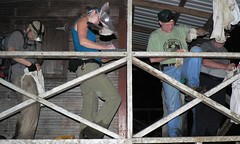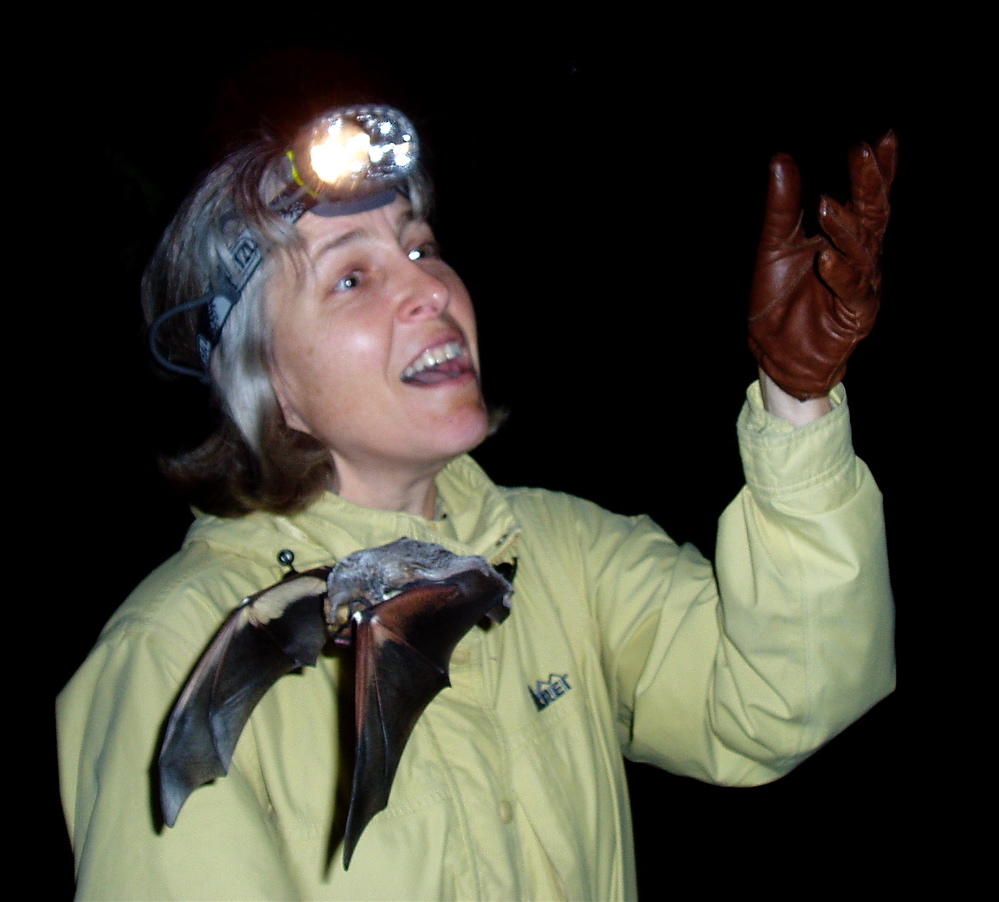Caribbean bat science!
At long last, here is the first of my promised entries on my time catching bats in the Caribbean this past summer.
The first part of the trip was on the island of St. Lucia. When I arrived, the rest of the group was already in full swing. We went almost immediately into the field to catch bats. The routine worked like this. Around 5pm we'd pack everyone and all the equipment up into the two already-trashed rental cars and head for the field. The group usually split up into a couple of teams. Before it got dark we set up the mist nets. These are very fine nets made of black string that in theory is invisible. The joke, of course, is that bats can see in the dark, much much better than us. In fact this same group just published a paper showing that only about 5% of the bats that come near the nets are actually caught in them. But that's another story.
We checked the nets regularly, every few minutes. When a bat landed in a net, we took it out as gently as possible, sometimes getting nasty bites in the meantime. Of course, we've all had our rabies shots! Then the bat went into a bag hanging from our belts, one for each species. We used bat bags in the BCI class, but this time the bags are bigger to hold more bats, and it was so warm out we don't need to put them inside our jackets. After a few hours of this, or when it started raining, we took the nets down and got ready to "process" the bats.
This picture shows the team processing bats the night I arrived. You can see one of the released bats flying in the upper middle of the photo. Before the bats were released, they' were pulled one at a time from the bag and inspected. We checked for species, sex and reproductive status, and age. Then, the lucky bats were released to fly away free.



0 Comments:
Post a Comment
<< Home